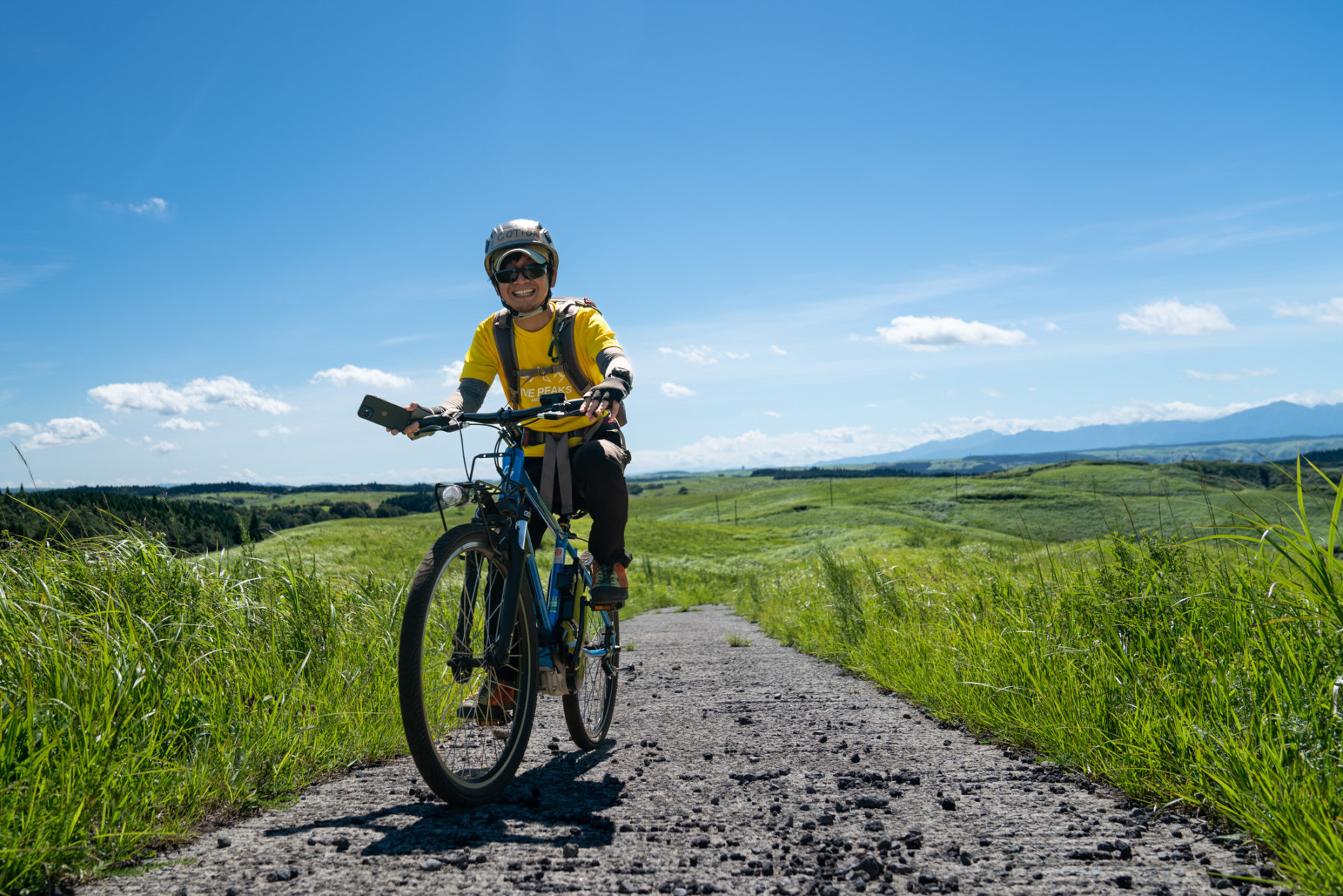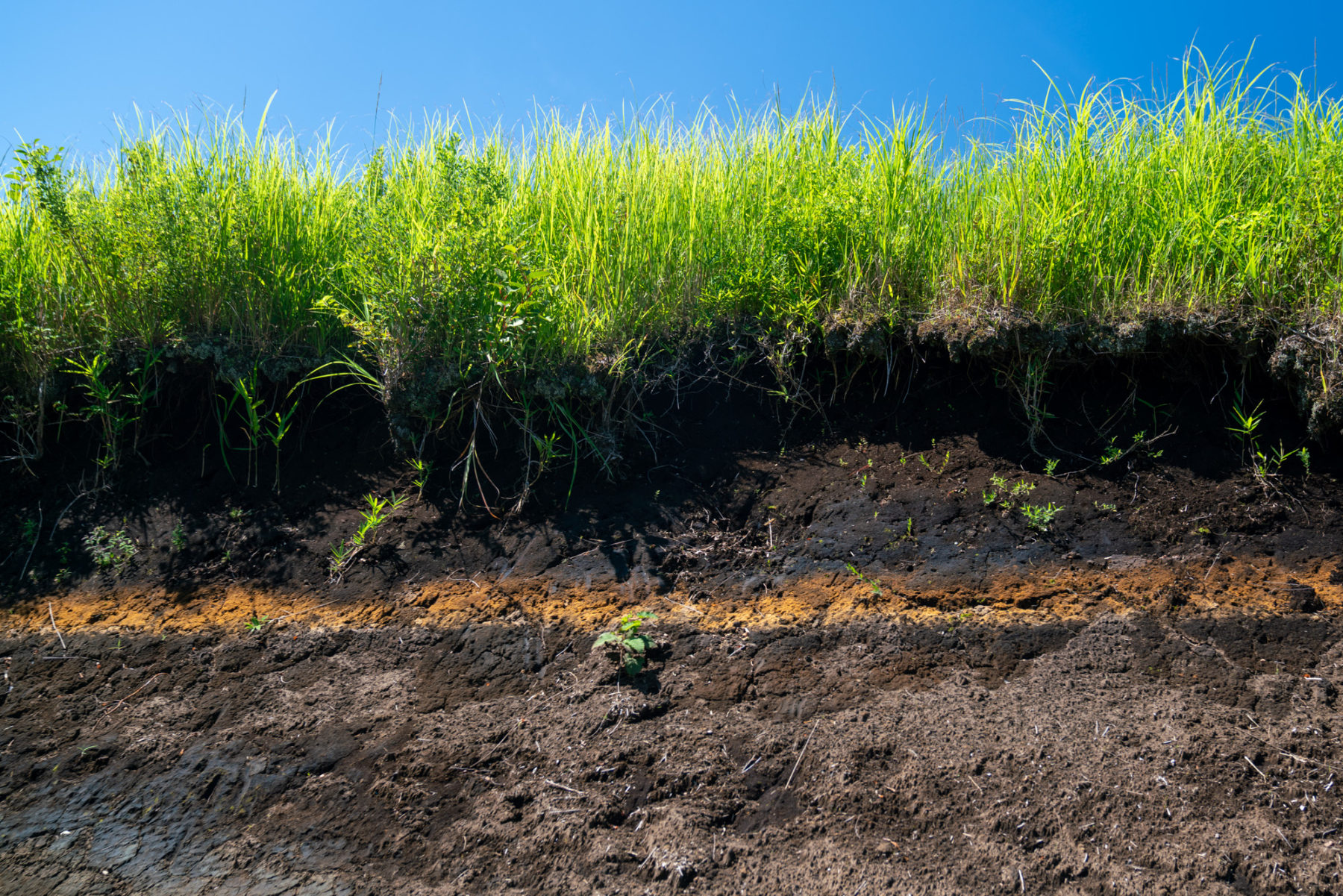Dreaming of a Japanese adventure: explore Kumamoto
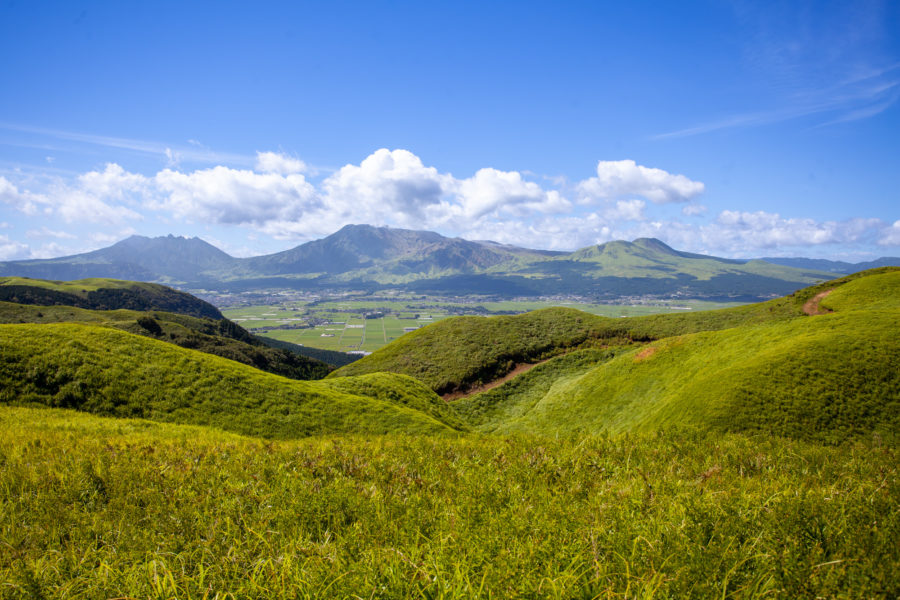
Kumamoto Prefecture, on the island of Kyushu, is known in Japan as a haven for nature lovers, with active volcanoes, wild rivers, and verdant islands just waiting to be explored. A quick 30-minute Shinkansen bullet train ride south from Fukuoka will get you a stone’s throw from the caldera of the Aso-Kuju National Park or up close to the wild dolphin pods of Amakusa.
The prefecture is stunning in all seasons, with a mild climate making it the perfect region to travel year-round. However, if you’re looking for a mixture of summer beach and mountain activities, Kumamoto is ready and waiting. Here are some of the best ways to get in on the action for those with a spirit for adventure.
Ride the firebreak of the Aso Caldera

Created by an eruption 90,000 years ago, the Aso Caldera and central lake that filled the caldera 8000 years ago, has been continuously inhabited for 30,000 years – generations of residents turning what was a muddy swamp into rich, cultivated land. During this time, the locals have managed the grasslands with controlled burns to help it regrow in the spring and summer. In March every year, once the grass has dried out, they perform this ‘noyaki’ process, with villagers walking along the approximate 500km of circular ‘wachi’ firebreak paths with sticks in hand to stop the fire from spreading to the forest on the rim of the caldera.
With the aid of e-mountain bikes and a guide leading the way, this exciting firebreak ride will take you along these age-old rolling wachi paths on the edge of one of Japan’s largest grasslands. The perfectly round green hills are almost Martian, reminiscent of an AI-generated stock photo when seen close-up.
Early August is the best time to explore the firebreaks as the grass is still short and panoramic views are plentiful. Still, every season has its highlights – autumn brings flowers and insects, winter brings snow, and the blackened hills after the controlled burn create a surreal contrast with the spring scenery in March. As well as tours around the perimeter of the caldera, there is also a one-day mountain-biking course to the active volcano crater itself.
Hike the Mennoishi trekking route
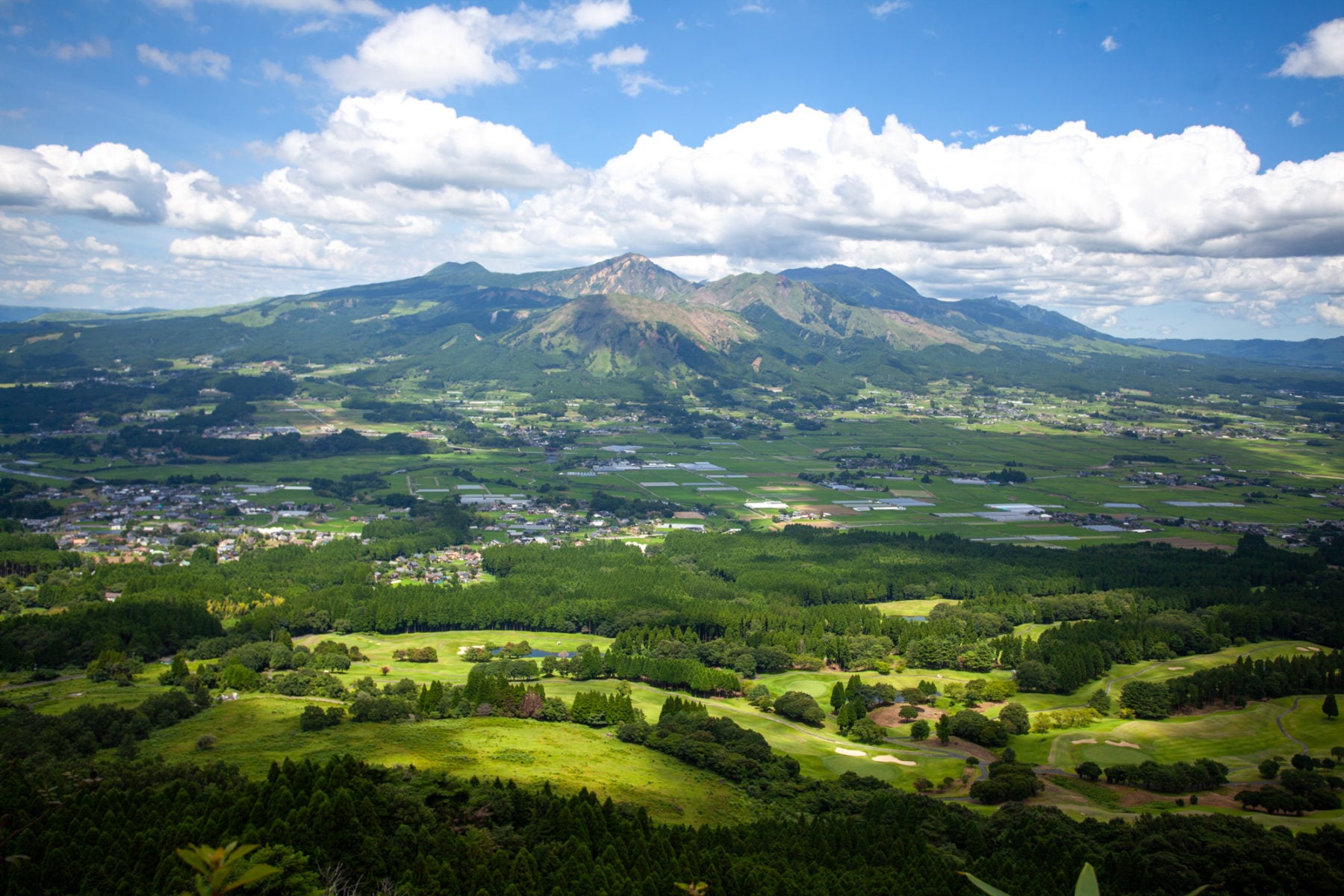
Unknown to even most locals, the Mennoishi trekking route was only possible with a professional guide until last year, but the path has been upgraded and it’s now possible to hike it unassisted. Mennoishi, literally translated as the ‘stone of immunity,’ was, until the 2016 Kumamoto earthquake, wedged on the edge of a cave in between two cliffs 40m into the air and was believed by locals to be lucky. People would come to pray to it for success in anything from sitting for exams, finding work or even being appointed in local elections. During the earthquake, it was dislodged, but this created another fortuitous likeness, that of a cat.
The hiking route starts on a winding access path through the trees, quickly turning into a hiking trail akin to an adventure park, with ladders to climb and metal chains to cling to as you make your way up through the dense forest. For those who want to make it to the top but aren’t cut out for the climbing sections, a ‘safe’ route is available, which winds its way alongside the steps and ladders. It takes roughly 1.5 hours (with multiple breaks included), and there is an abundance of ferns, flowers and moss-covered monoliths to examine on the way. If an instagrammable silhouette of a cat isn’t your style, the hike is worth it alone for the panoramic views afforded at a lookout almost at the top of the trail.
Raft the Kumagawa River
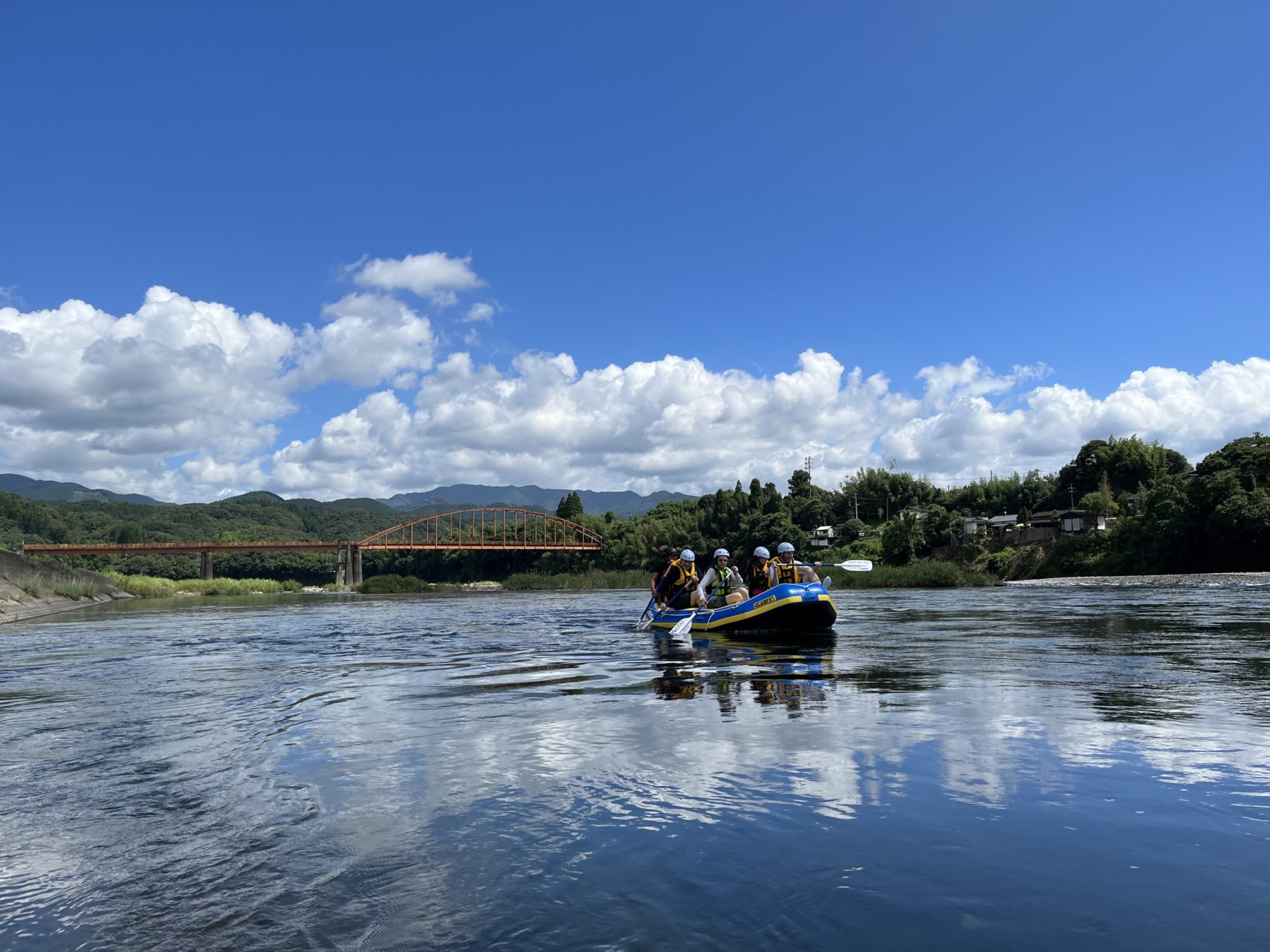
Strap on your lifejacket and prepare to get wet as experienced guides take you along one of the few river-rafting locations in Kyushu. Commercial rafting tours have been popular on the Kumagawa River for 20 years, and it’s easy to see why. The wide river allows for a range of conditions, from short sections of rapids to deep pools where you can jump into the water and float down peacefully, listening to the sounds of the surroundings. The combination of exciting fast flows with slower sections – exhibiting rich birdlife and nature – makes for an outstanding rafting experience, especially when compared to tours that focus on white-knuckle excitement and spills the whole way down.
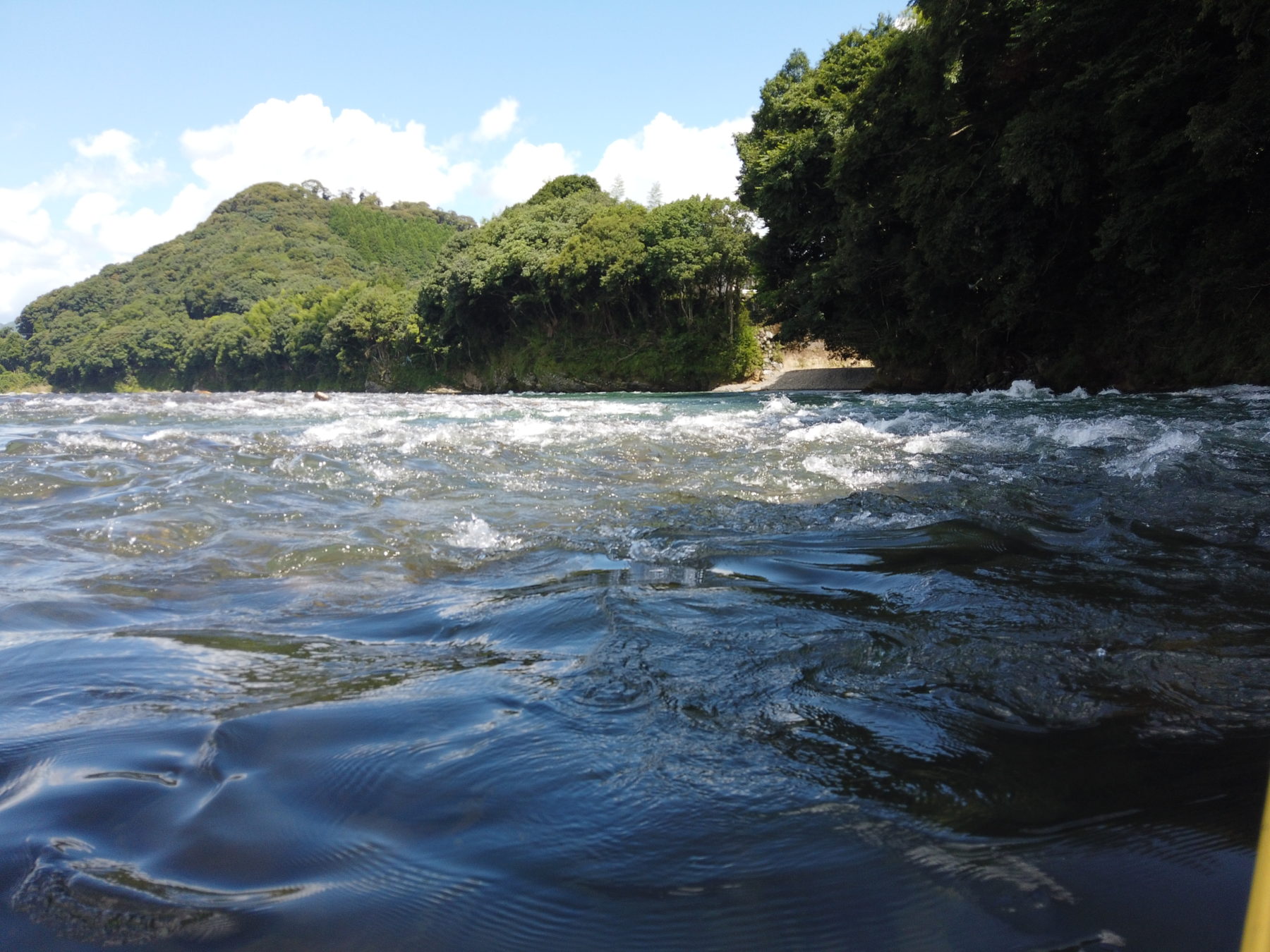
Only two years ago, the river flooded and some were doubtful whether it would even be possible to rebuild and continue with commercial tours. The flooding was extensive and the aftermath of the flood can still be seen today, with pylons reaching out of the river to where a train bridge had previously been. But the workers at Kumagawa Kudari have put a lot of effort into reviving the industry, with the fully renovated Hassenba base providing relaxing views of the river and fantastic food courtesy of the Kyushu Pancake Company. Many regular visitors love rafting in the summer, when the bright blue summer sky, tree-covered hills and crystal-clear river create breathtaking visual panoramas. As well as rafting tours, Hassenba also offers more leisurely boat tours so you can take in the beauty of the river and its surrounds at any pace. Cycling tours are also available from October–June.
Kayak to the islands of Amakusa

Amakusa, to the west of Kumamoto City, consists of a chain of over 100 islands, the majority of which are uninhabited and can only be accessible by boat. And this is where Funa-san, a kayak tour company owner, found his calling. Before he became a sea kayak tour guide, Funa-san would kayak along the Kumagawa River on some weekends and go snorkelling and scuba diving in Amakusa on others. In his mind, kayaking was for rivers, and snorkelling was for the ocean, but one day he borrowed a sea kayak from a friend and discovered that Amakusa was the perfect middle ground. So at age 35, he left his advertising sales job in the city and decided to do what he loved by starting a sea kayak tour company in Amakusa.
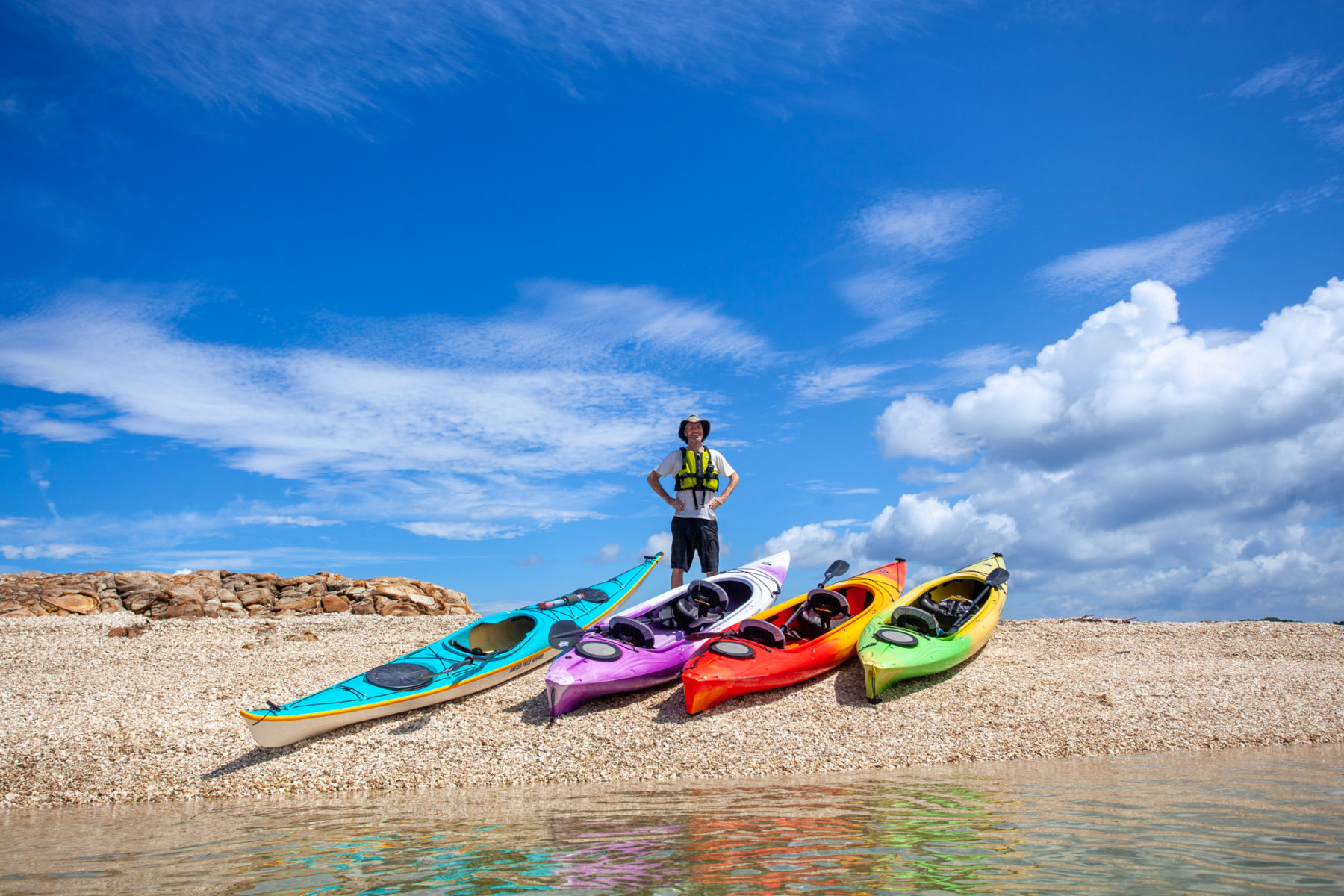
The waters of Amakusa have the most extreme tidal range of any in Japan, which changes daily. Jump in a sea kayak and make your way out to these stunning islands as you learn about the geography and history of the area. The waters of Amakusa are famous for dolphin watching, with pods of hundreds of dolphins calling the area home, and they also play host to large stingrays and (non-poisonous!) jellyfish. In contrast to the white water rafting of the Kumagawa, this is a far more relaxed affair, with plenty of time to take in the picturesque surroundings and cool down in secluded bays. Funa-san says Amakusa is unique in that once you arrive, there are so many things to do in such a small area, including snorkelling, scuba diving, cycling, parasailing and trekking, as well as great restaurants and hotels.
This article was brought to you by Kumamoto Prefectural Tourism Federation.
